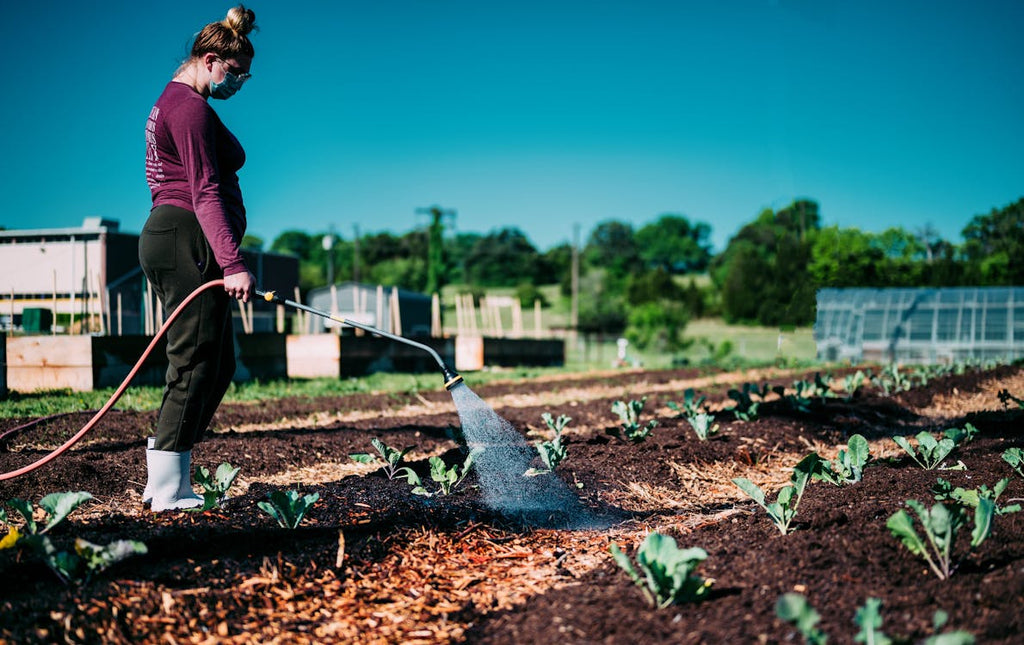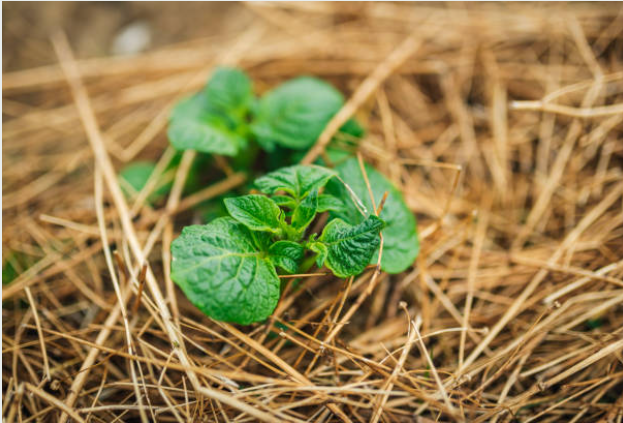
It’s going to be a long hot summer. Recently parts of the Eastern US and Canada have been hit with a record-setting heat wave, while other parts of North America are dealing with record heat, drought, and other extremes of hot weather. We’ve discussed gardening during a heat wave before, but given how things are going this summer we thought we’d revisit the issue. Let’s dig in and take a quick look at how to help our plants and gardens during and after a heat wave.
Monitoring soil moisture and watering plants effectively always important for plant health, but doubly and trebly so during and after a heat wave. Make sure your plants are watered appropriately and consistently—stop and go watering can cause additional stress during times of high heat. Soak the soil around the base of the plant with water and make sure it stays moist for best results. This is a time for drip irrigation and other methods for careful watering. Water at dawn and dusk for best results—putting water out during the heat of the day causes water loss due to evaporation. And remember that container plants may need more water than their in-ground counterparts.

Mulching the soil is always a good idea, but like monitoring soil moisture and effective watering practices mulching becomes so much more important during extremes of heat and high temperatures. A thick layer of mulch can protect the soil from heat and sun. This preserves not only water, but it helps keep the soil’s microbes and nutrition in place. All of these factors contribute to plant health and reduce both plant and soil stress when the temperatures are high.

Even heat-loving plants may benefit from some shelter, so providing some shade may help a great deal during hot weather. Creating shade can be as simple as moving container plants out of direct sun during the hottest or brightest parts of the day, or it may involve erecting a shade structure over them to provide some relief from the heat.

When it’s hot, plants are often under a great deal of additional stress so avoid pruning or trimming plants during a heat wave. Pruning and trimming are controlled damage for the plant—they contribute to plant health in the long run but they are injuries from which the plant has to recover. During a heat wave plants are dealing with enough health issues that it’s best to delaying pruning or trimming until temperatures drop.

Avoid Trimming
Likewise avoid fertilizing plants during a heatwave. A burst of nutrition and energy can push the plant to create new growth, which in turn creates additional stress at an already difficult time for plant health. Let your plants focus on getting through the difficult weather before you provide them the resources for a growth spurt.
It goes without saying, but avoid planting or transplanting during a heat wave. Moving to a new home is stressful for all of us, and plants experience a lot of stress during planting or transplanting due to damage and stress on the roots and adapting to a new set of circumstances. Delay planting or transplanting outdoor plants until well after temperatures have come down.

Keep yourself safe as you gardening during hot weather! Protect yourself from the sun, drink plenty of water, and rest during the hottest parts of the day. Gardening is a marathon, not a sprint, so take precautions and avoid heat illnesses during hot weather.
This heat wave will pass, but more hot weather will arrive eventually. Let’s all learn how to manage it now so that we can keep our plants, our gardens, and ourselves as safe and healthy as possible during these extreme weather events. Gardzen is all about community and we care about all of you, so please be safe out there!

Leave a comment